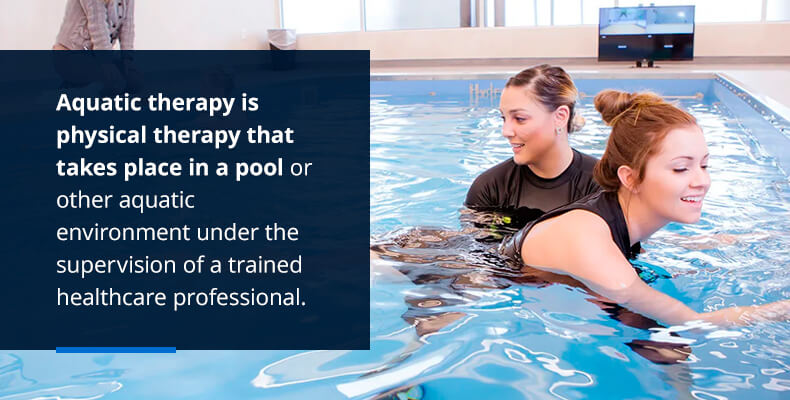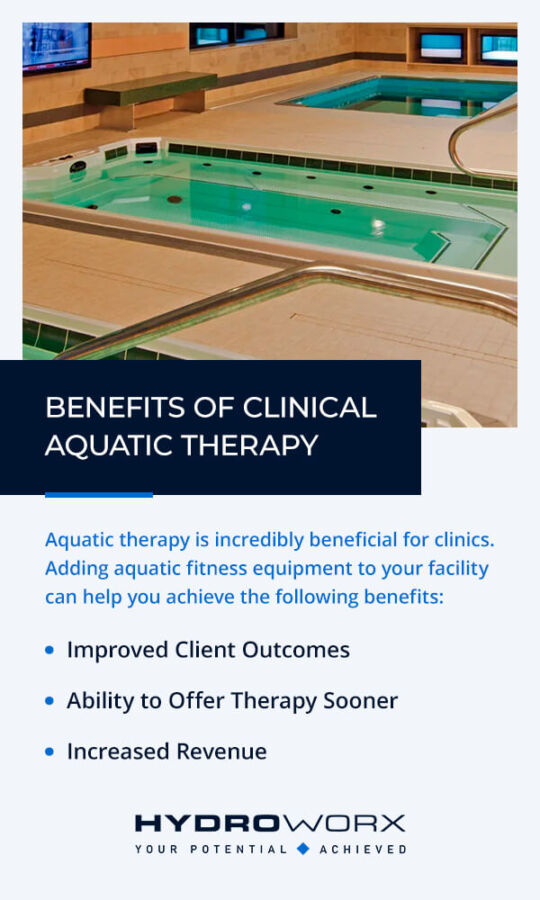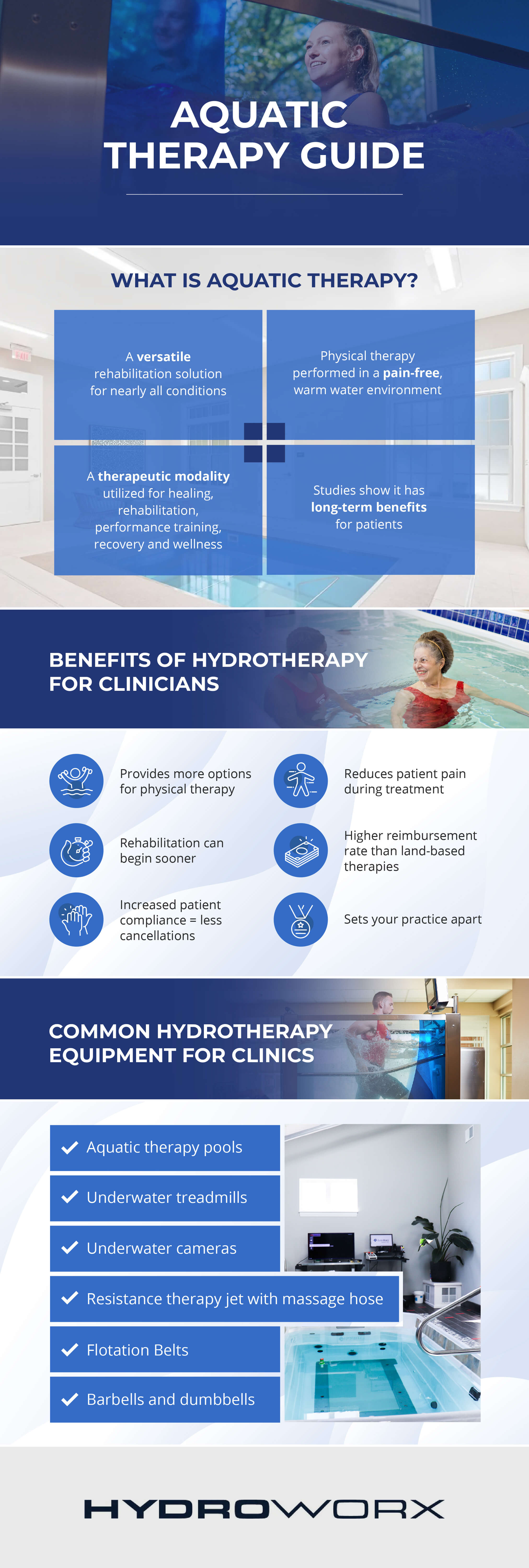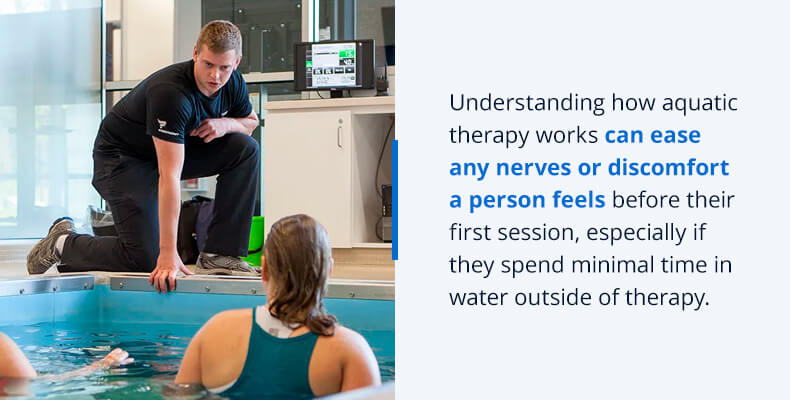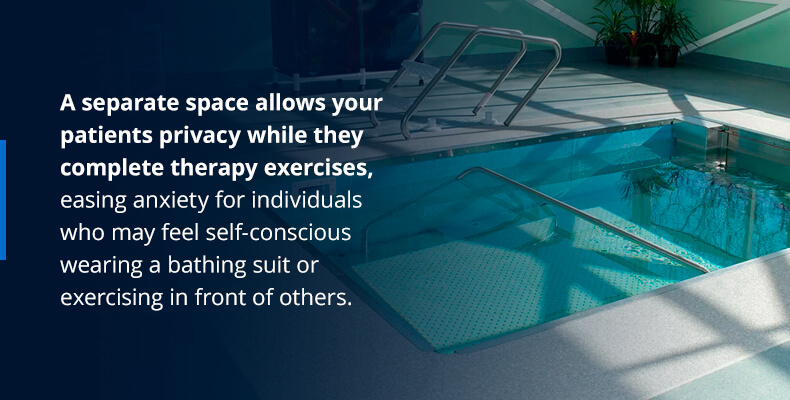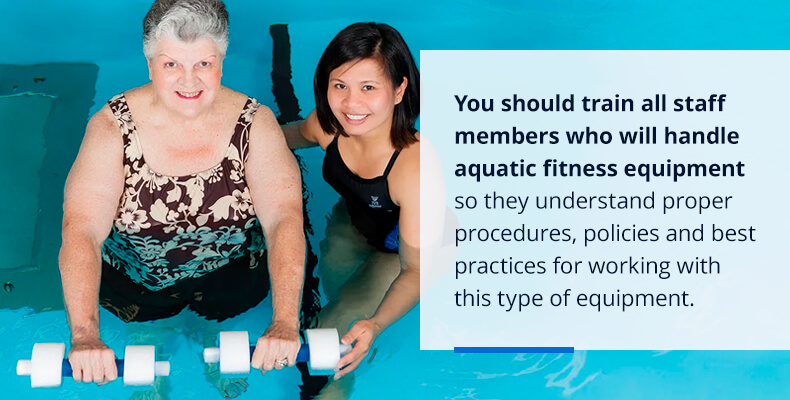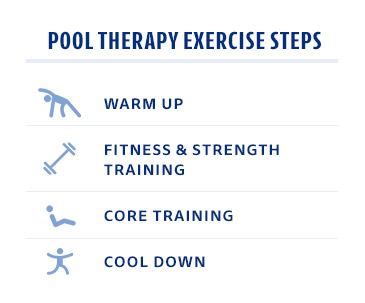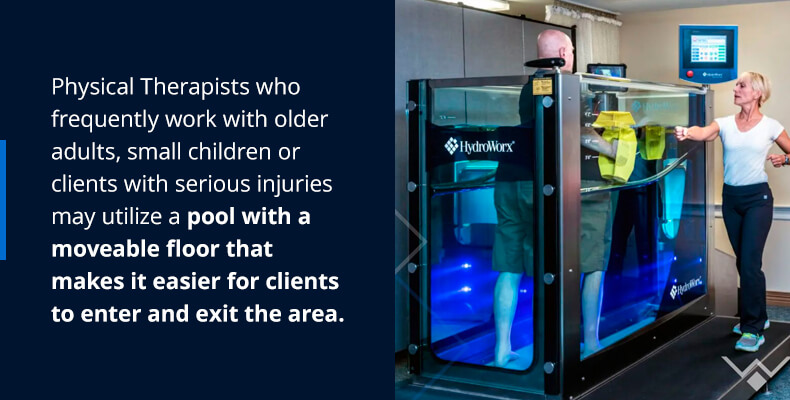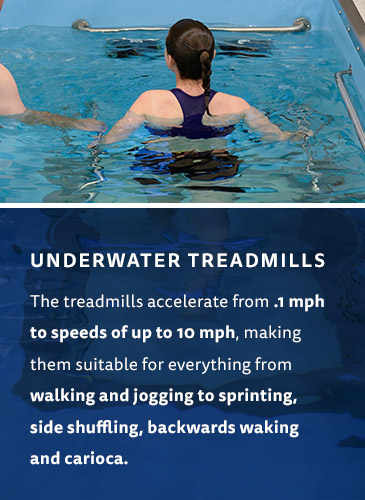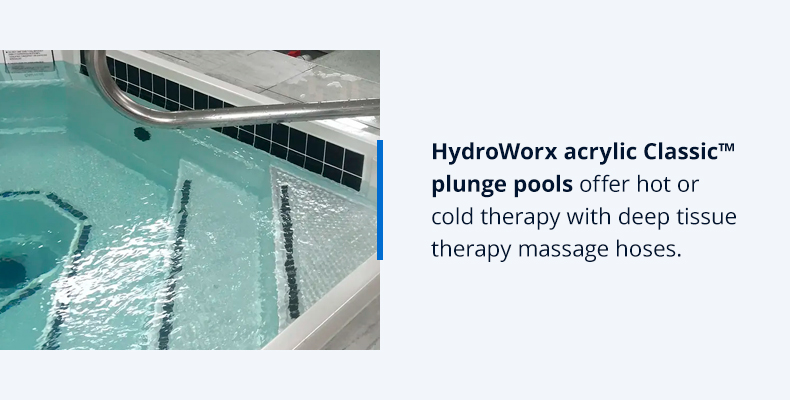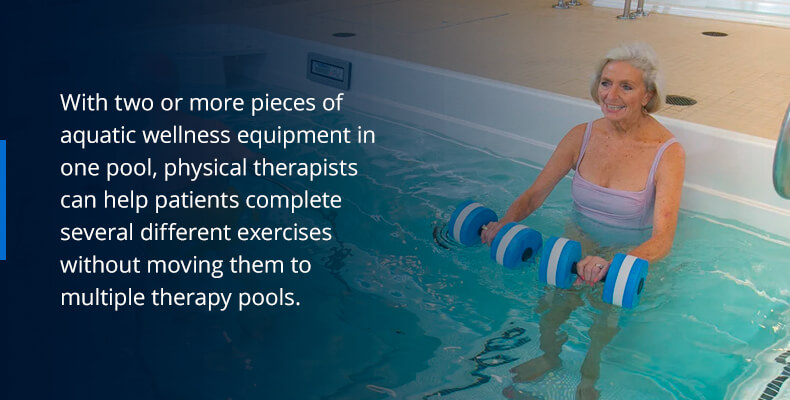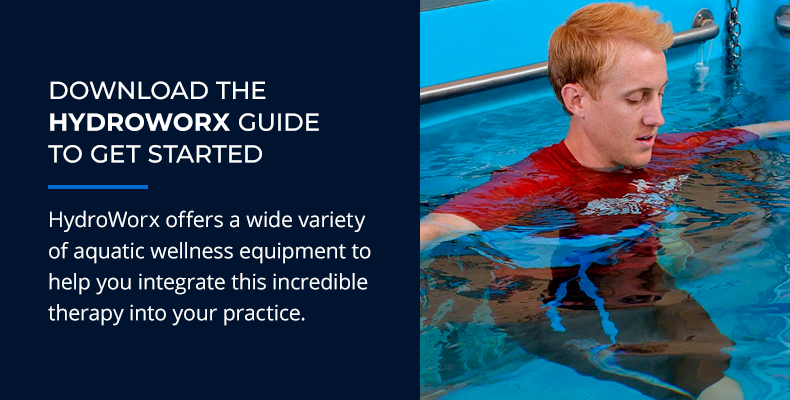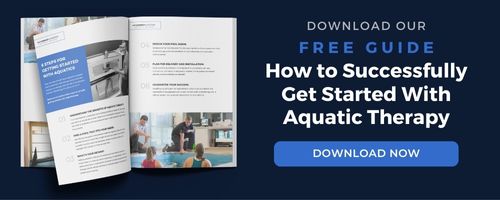
What Is Aquatic Therapy?
Aquatic therapy is physical therapy that takes place in a pool or other aquatic environment under the supervision of a trained healthcare professional. It is also known as water therapy, aquatic rehabilitation, aqua therapy, pool therapy, therapeutic aquatic exercise or hydrotherapy.
In the United States, those who can perform aquatic therapy are legally regulated medical professionals with the correct scope of practice and the ability to use the American Medical Association (AMA) Current Procedural Terminology (CPT) codes. Aquatic therapy is considered an add-on certification for physical therapists and athletic trainers who often work closely with occupational therapists and exercise physiologists to develop a plan of care for each client.
Common goals of aqua therapy programs include:
- Improving flexibility
- Improving balance and coordination
- Building muscle strength and endurance
- Enhancing aerobic capacity
- Assisting with gait and locomotion
- Reducing stress and promoting relaxation
Aquatic therapy is different from aquatic exercise or aquatic fitness because it is a physical medicine and rehabilitation specialty that requires the involvement of a trained professional and is covered by many insurance providers due to the personalized nature of the treatment.
Unlike aquatic therapy, aquatic exercise does not require a trained professional’s supervision. Insurance does not cover aquatic exercise and it often takes place in a group setting, including multiple people with different levels of physical fitness.
Aquatic therapy should not be confused with adaptive aquatics, either. Adaptive aquatics is the process of teaching people with disabilities how to swim safely in the water. Aquatic therapy does not focus on teaching clients how to swim.
Water therapy services are generally offered in hospitals, sports medicine facilities and traditional outpatient rehabilitation centers. Senior living centers may also provide aquatic therapy services as a way to encourage their residents to maintain or improve fitness levels, balance and strength.
History of Aquatic Therapy
Water therapy has been used for thousands of years throughout the world. Consider the following examples:
- Ancient Greeks and Romans bathed in hot springs to improve circulation and promote relaxation.
- Hippocrates recommended bathing in spring water as a way to treat sickness.
- Swiss monks were known to use thermal waters to treat sick or disabled people in their community.
- Japanese hot springs, or onsens, are said to have medicinal effects that include healing chronic pain, treating skin problems, curing menstrual disorders and relieving constipation.
- German physicians were firm believers in pediatric water therapy. Water birthing was very popular throughout Germany in the 1960s and 1970s.
Benefits of Clinical Aquatic Therapy
Aquatic therapy is incredibly beneficial for clinics. Adding aquatic fitness equipment to your facility can help you achieve the following benefits:
1. Improved Client Outcomes
Offering aquatic therapy enables clinicians to improve patient outcomes. Water is ideal for therapeutic purposes because of its buoyancy, viscosity, warmth and hydrostatic pressure.
Aquatic therapy is much gentler on a patient’s or athlete’s body because the water’s buoyancy reduces gravity on joints and muscles, placing minimal pressure on injured areas and allowing for flotation. Water’s hydrostatic pressure can reduce patient discomfort and the risk of falls because it provides stabilization, support and increased cardiovascular return. The decreased risk helps clients feel safe and improves their cooperation during therapy.
Warm water increases patient comfort, allowing clinicians to provide a soothing, relaxing therapeutic environment. Patients are more likely to keep their appointment times when they feel comfortable in therapy and look forward to it.
While aquatic therapy is gentle and comforting, it also helps individuals strengthen muscles and increase their rehabilitation progressions. Water’s natural viscosity provides the resistance people need to improve strength. Viscosity also forces a person’s respiratory muscles to work harder, increasing each patient’s long-term benefits.
Aquatic therapy is easier for physical therapists to provide because they can gently manipulate patients through various exercises using wave propagation and turbulence. With increased comfort, decreased fear and improved strength, individuals can recover faster with less pain and experience a higher quality of life. The satisfaction they feel with their outcomes can reflect positively on your facility.
2. Ability to Offer Therapy Sooner
Aquatic therapy also increases patient satisfaction because facilities can offer it sooner than land-based therapy. Since it’s gentler on joints and muscles, physicians can typically clear their patients for aquatic therapy sooner than other types of physical therapy.
Busy professionals or athletes desiring to return to their sport appreciate the ability to recover from injuries faster. You can attract more individuals to your business with aquatic wellness services by helping patients return to their normal activities faster than you could with land-based therapy.
3. Increased Revenue
Providing a faster, more comfortable form of therapy can give you a competitive edge over other clinics and increase your revenue. Very few health centers offer aquatic therapy, and most the ones that do typically have low-temperature pools. When you provide warm-water aquatic fitness equipment, doctors are more likely to refer patients to your facility, growing your client base and revenue stream.
Conditions Water Therapy Can Help
Water therapy may be helpful for clients suffering from the following conditions:
- Arthritis
- Arthroscopic surgery recovery
- Autism
- Balance disorders
Bursitis
- Cerebral palsy
- Chronic pain
- Depression
- Idiopathic joint pain
- Joint reconstruction surgery recovery
- Joint replacement surgery recovery
- Lower back pain
- Osteoarthritis
- Orthopedic injuries
- Parkinson’s disease
- Multiple sclerosis
- Rheumatoid arthritis
- Scoliosis
- Stress
- Spinal cord injury
- Sprains and strains
- Stroke
- Tendonitis
- Traumatic Brain Injury
People of all ages can enjoy water therapy benefits, including children with special needs and senior citizens. A trained physical therapist can create a session that takes into account any age-related physical limitations to promote a positive therapeutic experience.
Aquatic Exercise Program Safety
To provide a safe environment for clients, aquatic therapy practitioners should be trained in first aid, CPR, oxygen administration, automated external defibrillation, blood-borne pathogens and risk awareness (check local codes for actual requirements).
The suitability of aquatic therapy for a client should be decided on a case-by-case basis. Here are some situations where aqua therapy may not be an appropriate course of treatment:
- High fever
- Open wounds (unless covered with bio-occlusive dressing)
- Incontinence
- Uncontrolled seizure disorders
- COPD or other similar respiratory issues
- Currently taking medication that could alter cognition
- Client is currently pregnant and experiencing complications
- Chlorine or bromine allergy
- Serious fear of water
- Clients with Hepatitis A
Transitioning Patients and Athletes to Therapy in Water
For first-time aquatic therapy patients and athletes, use the following tips for a successful transition:
Show Understanding
An individual who has never tried aquatic therapy may feel nervous at first. Express understanding, patience, compassion, and empathy as you interact with patients. Give them time to explore the therapy pool if they would like to before they begin their first session. You should also answer any questions they have and offer encouragement as they progress through exercises and meet their goals.
Let Them Know What to Expect
Thoroughly explain aquatic therapy to each patient so they know what will occur during their session. Explain what they will need to bring to therapy, what type of exercises they will do, and how long therapy sessions last.
Remind them to bring a towel, cover-up, shoes to protect their feet in the pool area, a plastic bottle with drinking water to maintain hydration, and appropriate swimwear. Clients who need assistance dressing, showering, or walking should have a caregiver present during their treatment sessions. If the client is a child, their parent may be asked to participate in the session.
Let them know how much swimming will occur during their session (for many, depending on your pool, this will be minimal or none at all). You can also explain to them how they will enter and exit the aquatic fitness equipment.
Offer Alternative Dress Options
Some clients may not own a bathing suit or feel comfortable wearing one in front of others. Some individuals may also struggle to physically put a bathing suit on by themselves due to physical ailments or arthritis. You can ease patient discomfort by allowing them to wear alternative clothing such as a t-shirt and shorts.
Give Them a Tour of Your Hydrotherapy Space
If you have photos of your hydrotherapy space available, share them with your client beforehand so they know what to expect before arriving. This may generate questions like, “Where will I change my clothes?” or “Will people see me during my session?” At this point, you can help them understand how your clients use the space, any privacy devices you have available, and make sure they feel comfortable.
How to Successfully Integrate Aquatic Therapy
You can successfully integrate this therapy into your facility by setting goals, planning, acquiring an experienced team, maintaining your hydrotherapy equipment, offering the right services, and marketing effectively.
Set Goals and Create a Plan
What are your company’s goals for your aquatic therapy offerings? To integrate this therapy into your program, you should set financial goals and plan steps for reaching them. Research other facilities in your area that offer aquatic wellness services and determine what you need to do to make your services stand out and how you can best serve the people in your community.
Have a Plan for Your Staff
There is no one-size-fits-all approach to staffing your aquatic therapy program. For many clinics and facilities, your current physical therapists or athletic trainers may be the primary staff for your program.
Since many land-based exercises can be completed in an aquatic environment, some staff may not feel the need for additional education about aquatic therapy-specific therapy. Others, however, may want to pursue specialized certifications or complete additional education paths. This is all dependent on each clinic or facility’s preferences and the individual practitioners.
Many clinics and facilities operate very successful aquatic therapy programs without requiring staff to receive certifications. Likewise, there are countless staffs who have completed extra courses and are also thriving.
How do you decide what’s best for you? We recommend scheduling a live demo of our products to see the types of exercises that many of our customers utilize on a daily basis with their HydroWorx. This is a great opportunity to get an idea (and some inspiration) for your staff. At this point, you will likely have a direction for which scenario will make sense for your team.
Develop a Maintenance Schedule
Proper maintenance helps aquatic therapy equipment last longer and reduces repair costs. Make sure your staff members understand your maintenance expectations and create a schedule.
Train each individual responsible for these tasks on how to replace filters, maintain correct chemical levels and clean the pool’s floor. Check state-based water equipment guidelines on the Centers for Disease Control and Prevention’s (CDC) website to ensure you properly maintain each piece of equipment.
Determine Which Services You Will Offer
Aquatic therapy can serve several purposes and benefit a wide variety of individuals. You can limit your services to specific purposes, or you can open them up to a broader client base by offering wellness-program-style group classes, athletic training and injury recovery. Each hydrotherapy service you create is another opportunity for revenue.
Advertise, Create Partnerships, and Get Referrals
Because aquatic therapy can significantly increase your ROI, it’s essential to spread the word about your services. Advertise your aquatic therapy offerings on your website, provide easily accessible information about your services in your offices and waiting rooms, and share it on social media or in public advertisements.
You can also reach out to nearby businesses, medical offices, hospitals, schools, and colleges. Orthopedic surgeons and doctors treating patients with chronic pain can refer their patients to your facility for physical therapy, and school and colleges can send their athletes to you for athletic training or faster injury recovery. You can also host an open house event and allow individuals to tour your facility and aquatic wellness equipment.
Pool Therapy Exercises for Physical Fitness
When aquatic therapy is intended to promote physical fitness, each session is broken into three parts:
- Warm up: The client begins with low-resistance exercises designed to target the upper and lower extremities. This often includes stretches and extensions, followed by brief walking or jogging on an underwater treadmill.
- Fitness and strength training: After the warm-up, the client will often perform cardiovascular activities such as running, sprint intervals or multi-planar activities. Strength activities, including plyometrics, can also be performed.
- Core training: After fitness and strength training, the client does 20-30 minutes of squats, leg swings, arm swings, shoulder presses and other core-training exercises.
- Cool down: Using a therapy pool with a massage hose attached to resistance jets provides a deep tissue massage experience that works muscles to prevent lactic acid buildup.
Types of Equipment for Clinics
Before integrating aquatic therapy in your facility, it’s beneficial to know the types of available equipment. Underwater treadmills (either as free-standing units or large-scale pools) offer the benefits of walking and running with minimal joint impact.
There are also multiple types of aquatic wellness pools, ranging from small pools for single-client use to large pools that accommodate group workouts.
Physical therapists use cold-water plunge pools to speed muscle recovery in athletes and reduce joint inflammation. Plunge pools can also provide hot water for soothing sore muscles.
To successfully add aquatic therapy to your services, consider how the following types of equipment can benefit your patients or clients:
Treadmills
Land-based running provides an excellent cardiovascular workout but can lead to joint damage. However, with an underwater treadmill, it’s possible to enjoy all the benefits of running without the impact.
Underwater treadmills can be used to help athletes recover from injuries or to regain full-body motion after surgery. This is particularly useful if the athlete or patient is non or partial weight-bearing. High-end therapy pool models have resistance jets and adjustable speeds to allow for a gradual increase in workout intensity.
Benefits of using a treadmill as part of water therapy include:
- Promotes early range of motion
- Initiates gait training in a low-impact environment
- Duplicates land-based movement biomechanics to improve clients’ gait patterns more accurately than aqua jogging
- Improves cardiovascular stamina
- Impacts muscle strengthening
- Increases ability to perform a wide range of plyometrics
- Reduces blood pressure levels
- Decreases joint stiffness
- Offers the ability to perform exercises in multiple planes of motion
HydroWorx underwater treadmills can be used with either bare feet or shoes. The treadmills accelerate from .1 mph to speeds of up to 10 mph, making them suitable for everything from walking and jogging to sprinting, side shuffling, backward waking and carioca.
Physical Therapists who frequently work with older adults, small children, or clients with serious injuries may utilize a pool with a moveable floor that makes it easier for clients to enter and exit the area. For example, the HydroWorx 2000 and 1200 Series pools feature a fully moveable floor that can be raised and lowered in less than 30 seconds to allow for a safe entry to the therapy session.
Adjustable water depth controls, whether standard or as an optional therapy pool feature, benefit therapists by allowing for easy adjustments to pool water levels. This allows for a clinician to determine what percentage of the client’s weight should be supported, creating a session that is tailored to the individual’s abilities.
Underwater cameras are key features in aqua therapy pools, as they allow physical therapists to monitor the client’s form and progress from session to session or to make real-time adjustments. Clients can also use the cameras to provide an additional level of visual feedback as they work through a series of exercises.
Plunge Pools
Plunge pools can maintain cold or hot temperatures, allowing facilities to offer cold therapy, hot therapy or a combination of both therapies. Cold therapy helps athletes reduce joint inflammation and increase blood flow, which benefits muscles. Hot therapy stimulates the brain to release endorphins and relaxes stiff muscles.
The HydroWorx THRIVE® Transportable plunge pool can reach temperatures as low as 42 degrees Fahrenheit or as high as 104 degrees Fahrenheit. It is small enough to fit through a doorway and fill small spaces but large enough to fit up to six people. With benches and stairs, patients can easily sit in this pool for hot or cold therapy, and placing two pools beside each other allows facilities to offer combination therapy.
HydroWork Classic™ plunge pools offer hot or cold therapy with deep tissue therapy massage hoses. Cold plunge pools maintain a water temperature of 50 degrees Fahrenheit, while hot plunge pools maintain a temperature between 94 and 104 degrees Fahrenheit.
HydroWork Rejuvenate™ plunge pools are also available for cold, hot and combination therapy. They offer several options for benches and stairs, and they come in eight different size configurations.
The newest models of therapy pools offer pinpoint temperature control and special massage hoses to target the specific muscles in need of treatment. A pool with underwater massage capabilities helps prevent lactic acid buildup, which reduces soreness and speeds recovery time. Massage can also provide an effective way to help people dealing with chronic pain.
Large Therapy Pools
Large therapy pools enable clinics to offer aquatic therapy to one or multiple people during a session. Some pools feature multiple types of therapy equipment or floor levels in one pool. With a large therapy pool, facilities may consider offering group fitness classes to increase their revenue stream.
Larger pools can create multiple therapy stations, allowing clinics to offer several different types of aquatic therapy in one pool. With two or more pieces of aquatic wellness equipment in one pool, physical therapists can help patients complete several different exercises without moving them to multiple therapy pools. Large therapy pools come in the following models:
- HydroWorx 500: The HydroWorx 500 can accommodate up to three people in one session and features resistance jets and an underwater treadmill.
- HydroWorx 750: The HydroWorx 750 model features resistance jets, an underwater treadmill and enough space to accommodate up to five people at one time. This model can also include an optional deep water well.
- HydroWorx 1200: The HydroWorx 1200 can accommodate one to two individuals at one time and features moveable floor technology.
- HydroWorx 2000: The HydroWorx 2000 features an underwater treadmill, touch screen interface, underwater cameras, a resistance therapy jet and safe access. It can accommodate one to four people.
- HydroWorx 3500: With a large interior space, underwater treadmill, resistance therapy jet, underwater cameras and the option to add a seven-foot deepwater access area, the HydroWorx 3500 is an innovative option. This model can accommodate multiple people at one time.
How Much Does Aquatic Therapy Equipment Cost?
Aquatic therapy pools range in size and features, making it possible for nearly any facility to find a product suitable for their needs.
The cost of a HydroWorx pool is determined by the specific hydrotherapy goals and facility needs of each customer. To figure out your custom solution, we’ve developed a simple process that is based on a few factors.
Accessories for Your Aquatic Therapy Pool
You can enhance your aquatic therapy exercises with the following items:
- Ankle and wrist weights
- Barbells and dumbbells
- Flotation rings and buoyancy belts
- Resistance bands or gloves
- Pool noodles and kickboards
- Short-tipped flippers and fins
- Resistance and aquatic paddles
- Foam collars
- Stationary bicycles
Floatation devices provide excellent support for individuals who need help while walking or exercising in water. You can offer flotation rings, foam collars and buoyancy belts to help clients feel more comfortable in the water and move with more ease. These accessories also aid in different aquatic methods, so the type of aquatics an individual needs to perform will determine the types of accessories they need.
Resistance bands and weights such as barbells, dumbbells, ankle weights and wrist weights are excellent tools for strength training in the water, enabling individuals to lift weights in a way that’s gentle on their joints.
Download the HydroWorx Guide to Get Started
Aquatic therapy significantly benefits facilities offering physical therapy, athletic training and wellness programs. This gentle practice delivers health benefits in a relaxing setting, attracting new clients and patients who want to improve their wellness or recover from an injury quickly and effectively.
HydroWorx offers a wide variety of aquatic wellness equipment to help you integrate this incredible therapy into your practice. Download our guide, How to Successfully Get Started With Aquatic Therapy, to learn more.
Download our Guide: “How to Successfully Get Started With Aquatic Therapy”


